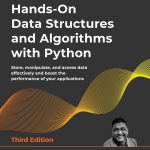
Batch normalization, a technique that has revolutionized the training of deep learning models, acts as a silken thread in the tapestry of neural networks, weaving stability and speed into the often tumultuous landscape of gradient descent. Imagine, if you will, a world where each layer of a neural network breathes in its own atmospheric conditions, adjusting its internal states to some unseen fluctuations in the data distribution. This world is chaotic, and chaos breeds inefficiency. Enter batch normalization, a gracious mechanism that introduces serenity among the stormy seas of data.
The concept of batch normalization is deceptively simple, yet profoundly transformative. At its core, it normalizes the inputs of each layer within the network. By doing so, it ensures that the activations are kept within a reasonable range, mitigating the covariate shift problem. This shift occurs when the distribution of inputs changes during the training process, a phenomenon that can lead to inefficient convergence. With batch normalization, each mini-batch of data is standardized by centering the mean to zero and scaling the variance to one. This act of normalization fosters a more stable gradient flow, allowing for faster and more reliable training.
Think a scenario where you’re climbing a mountain in thick fog. Each step might lead you into unforeseen pitfalls or meandering paths. Batch normalization, akin to a guide wielding a torch, illuminates your way, providing you with a clearer understanding of the terrain beneath your feet. Consequently, you can traverse this landscape with confidence, not only reaching the summit faster but also with minimized risk of stumbling.
To visualize this process through a concrete example, let’s bring in some Python code. The following snippet demonstrates how to integrate batch normalization into a simple feedforward neural network using TensorFlow:
import tensorflow as tf
# Define a simple feedforward neural network
model = tf.keras.Sequential([
tf.keras.layers.Dense(128, activation='relu', input_shape=(784,)),
tf.keras.layers.BatchNormalization(), # Batch normalization layer
tf.keras.layers.Dense(64, activation='relu'),
tf.keras.layers.BatchNormalization(), # Another batch normalization layer
tf.keras.layers.Dense(10, activation='softmax')
])
# Compile the model
model.compile(optimizer='adam',
loss='sparse_categorical_crossentropy',
metrics=['accuracy'])
Here, we see how the tf.keras.layers.BatchNormalization() layer is seamlessly integrated into the architecture of the model. Its presence twinkles like a beacon, reassuring the learner that chaos has been tamed. Yet, that is but a glimpse, a single thread in the grand design of batch normalization. The implications stretch far and wide, as this technique not only accelerates convergence but also works as a form of regularization, reducing the likelihood of overfitting.
In essence, understanding batch normalization is akin to grasping the delicate balance of forces at play in a grand symphony; it harmonizes the convoluted interactions of data, model parameters, and optimization processes, transforming what could be an arduous journey into a melodious expedition through the vast realms of deep learning.
Benefits of Batch Normalization
The benefits of batch normalization extend far beyond mere acceleration of the training process; they permeate the entire landscape of neural network design, ushering in enhancements that ripple through accuracy, robustness, and ease of experimentation. One can consider of it as the alchemist’s stone, capable of transmuting cumbersome models into light and agile entities that possess the agility of a gazelle bounding through the savanna.
Consider the aspect of improved convergence rates—a profound elevation in efficiency. In the absence of batch normalization, a neural network might meander through perplexing valleys of loss, each epoch leading to a struggle as it seeks a local minimum. With the introduction of batch normalization, however, the terrain smooths out; the gradient descent finds itself traversing a path that is more consistent and predictable, akin to a well-paved road. That is not merely a fanciful metaphor but a reality grounded in mathematical intuition, assisting models to adapt swiftly to changes in data distributions.
Furthermore, batch normalization acts as a regularizer, a guardian that shields the model from the overfitting temptations that often lurk in the shadows of high-capacity networks. By normalizing the outputs from the previous layer, it injects a dose of noise into the training process, akin to an artist adding texture to a painting, making the model less sensitive to small fluctuations in the training set. Thus, the network learns generalized representations rather than memorizing the data, which is important in the quest for robustness and generalization.
This technique also opens new avenues for experimentation; one can increase the learning rate, a hyperparameter that often frightens practitioners with its potential to destabilize training. Batch normalization, however, endows the network with a greater resilience to higher learning rates, as it helps maintain stable activations. This newfound freedom allows researchers and practitioners to explore various network architectures and training regimes without the paralyzing fear of divergence.
Moreover, batch normalization offers a certain elegance in the neural network’s architecture, simplifying the process of tuning other hyperparameters. As the internal covariate shift is vanquished, the need for meticulous adjustment of learning rates and initialization strategies diminishes. The layers of the network, now comfortably residing within a well-defined range of outputs, elongate the horizon of possibilities, allowing creativity to flourish without the constraints of empirical tedium.
Let us take a moment to see this transformative effect in code. The following TensorFlow implementation showcases the use of batch normalization, demonstrating its integration not only as a tool for stabilization but also as a conduit for unleashing creativity in model design:
import tensorflow as tf
# Define a more complex neural network model
model = tf.keras.Sequential([
tf.keras.layers.Dense(256, activation='relu', input_shape=(784,)),
tf.keras.layers.BatchNormalization(), # First batch normalization layer
tf.keras.layers.Dense(128, activation='relu'),
tf.keras.layers.BatchNormalization(), # Second batch normalization layer
tf.keras.layers.Dense(64, activation='relu'),
tf.keras.layers.BatchNormalization(), # Third batch normalization layer
tf.keras.layers.Dense(10, activation='softmax')
])
# Compile the model with a higher learning rate
model.compile(optimizer=tf.keras.optimizers.Adam(learning_rate=0.01),
loss='sparse_categorical_crossentropy',
metrics=['accuracy'])
In this model, we see the beauty of layered batch normalization manifesting three times, each instance acting as a sentinel against erratic behavior. The architecture beams with promise, illustrating the practical benefits of normalization in a visually engaging manner. The sacred dance of stability and creativity unfolds, allowing us not only to dream but to realize those dreams with newfound clarity.
Thus, the advantages of batch normalization coalesce into a compelling narrative, one that intricately interweaves the threads of efficiency, robustness, and ingenious experimentation. In this ever-evolving saga of deep learning, it stands as a beacon of hope—a testament to the potential of human ingenuity in using mathematical phenomena to carve pathways through the dense fog of data, leading us inexorably towards greater depths of understanding and capability.
Mathematical Foundations of Batch Normalization
As we delve into the mathematical foundations of batch normalization, we encounter a rich landscape adorned with the elegant structures of statistics and linear algebra. One must first grapple with the notion of a mini-batch, which serves as a microscopic snapshot of the larger dataset. Denote this mini-batch as ( B = {x_1, x_2, ldots, x_m} ), where ( m ) represents the number of samples within the batch. Each ( x_i ) can be viewed as a vector encapsulating feature values of a single data instance. The power of batch normalization emerges from our quest to standardize these samples, rendering them more conducive for effective learning.
To achieve this, we calculate the mean and variance for each feature across the mini-batch, effectively anchoring our understanding within statistical confines. The mean, denoted as ( mu_B ), captures the central tendency of the features, while the variance, denoted as ( sigma_B^2 ), quantifies the dispersion around this central point. Expressed mathematically:
mu_B = frac{1}{m} sum_{i=1}^{m} x_i
sigma_B^2 = frac{1}{m} sum_{i=1}^{m} (x_i - mu_B)^2
With these parameters in hand, we embark on the normalization journey. Each feature in the mini-batch is now transformed into a standardized form, wherein we subtract the mean and divide by the standard deviation:
hat{x}_i = frac{x_i - mu_B}{sqrt{sigma_B^2 + epsilon}}
Here, ( epsilon ) is a small constant introduced to prevent division by zero, safeguarding our calculations with the grace of mathematical prudence. This meticulous transformation reshapes the feature distribution, centering it around zero and scaling it to unit variance—an alchemical process that imbues robustness into our model. Yet, the plot thickens! Our journey doesn’t end with mere normalization; the introduction of learnable parameters unfolds the grandeur of flexibility.
In the unadorned realm of ( hat{x} ), we inject scale ( gamma ) and shift ( beta ) parameters. These allow the model not only to standardize but also to learn an optimal representation of the data during training. The transformation now metamorphoses into:
y_i = gamma hat{x}_i + beta
Thus, by transforming ( hat{x}_i ) through these parameters, the model regains the capacity to express a broader range of functions while maintaining the advantages of normalization. This duality—wherein we stabilize and yet unleash expressiveness—is the crux of batch normalization, and it is where the mathematical elegance truly shines.
Furthermore, the batch normalization mechanism unfolds a tantalizing perspective: during inference, when the network encounters new data, it no longer relies on mini-batches. Instead, we compute the mean and variance across the entire training dataset, ensuring that the model remains steadfast and consistent. This transition—implicit as it may seem—bridges the chasm between training and real-world deployment, mirroring the ideals of stability across disparate domains.
As we decode the intricacies of these mathematical constructs, let us observe their manifestation in TensorFlow, illustrating the beauty of these concepts put into practice:
import tensorflow as tf
# Define a function for batch normalization layer
def batch_norm_layer(inputs):
return tf.keras.layers.BatchNormalization()(inputs)
# Build a model with batch normalization explicitly defined
model = tf.keras.Sequential([
tf.keras.layers.Dense(256, activation='relu', input_shape=(784,)),
batch_norm_layer,
tf.keras.layers.Dense(128, activation='relu'),
batch_norm_layer,
tf.keras.layers.Dense(10, activation='softmax')
])
# Compile the model
model.compile(optimizer='adam',
loss='sparse_categorical_crossentropy',
metrics=['accuracy'])
In this code, we observe the weaving of mathematical principles into the fabric of machine learning. The simplicity of the implementation contrasts with the underlying complexity of the statistics at play—an interplay reminiscent of a fractal, where simple rules give rise to profound structures. As batch normalization intertwines with the linear paths of neural networks, it transcends mere computation; it becomes a philosophical inquiry into the harmony of order arising from chaos. We stand in awe of this synthesis, where each computational step reverberates with the echoes of mathematical elegance, driving the narrative of modern deep learning forward.
Implementing Batch Normalization in TensorFlow
import tensorflow as tf
# Define a simple feedforward neural network
model = tf.keras.Sequential([
tf.keras.layers.Dense(128, activation='relu', input_shape=(784,)),
tf.keras.layers.BatchNormalization(), # Batch normalization layer
tf.keras.layers.Dense(64, activation='relu'),
tf.keras.layers.BatchNormalization(), # Another batch normalization layer
tf.keras.layers.Dense(10, activation='softmax')
])
# Compile the model
model.compile(optimizer='adam',
loss='sparse_categorical_crossentropy',
metrics=['accuracy'])
The integration of batch normalization into a model is remarkably intuitive in TensorFlow, allowing the architect of the neural network to inscribe layers with ease and elegance. The model’s architecture, as illustrated above, binds the layers with normalizing force, each BatchNormalization() layer acting both as an ally and a bulwark against the capricious whims of the data.
However, embracing this technique does not merely constitute a superficial enhancement; it encapsulates a deeper philosophy, one that acknowledges the impermanence of our data distributions and the necessity to adapt. This flexibility extends beyond just the architecture’s static layout—it is embodied in the dynamic adjustments made to the mini-batch statistics during training. The network, thus adorned with normalization layers, transforms its approach to learning, each adjustment bringing it closer to the essence of the data it strives to model.
Ponder the dual nature of batch normalization: as it shapes the training details, it also serves as a pivotal transition into inference, creating a seamless conduit from the chaotic training phase to the more ordered world of evaluation. During inference, our model no longer relies on mini-batches; rather, it honors the foundational statistics accumulated during training, speaking with the voice of experience and adaptability. The mean and variance are now global, reflecting the cumulative wisdom of each passed epoch, a clever retention of knowledge that enriches the model’s responses to novel inputs.
As architects of neural networks, we must circle back to the notion of hyperparameter tuning. The inclusion of batch normalization is akin to a fresh canvas for artists—no longer constrained by the conventional limits, the network flourishes with newfound potency. The learning rate can be elevated, a daring yet thrilling prospect, for with normalization, it can withstand the tempestuous swings of gradient descent. Higher learning rates pave the way for rapid exploration of the parameter space, akin to a sprightly dancer navigating through a crowded ballroom, fluidly weaving through potential pitfalls.
Now, let us glimpse a more elaborate implementation that showcases these principles in a practical context, wherein batch normalization emerges not merely as an enhancement but as an essential companion in the dance of learning:
import tensorflow as tf
# Define a more complex neural network model
model = tf.keras.Sequential([
tf.keras.layers.Dense(256, activation='relu', input_shape=(784,)),
tf.keras.layers.BatchNormalization(), # First batch normalization layer
tf.keras.layers.Dense(128, activation='relu'),
tf.keras.layers.BatchNormalization(), # Second batch normalization layer
tf.keras.layers.Dense(64, activation='relu'),
tf.keras.layers.BatchNormalization(), # Third batch normalization layer
tf.keras.layers.Dense(10, activation='softmax')
])
# Compile the model with a higher learning rate
model.compile(optimizer=tf.keras.optimizers.Adam(learning_rate=0.01),
loss='sparse_categorical_crossentropy',
metrics=['accuracy'])
In this intricate tapestry of layers, we observe a triad of batch normalization operations, each a vanguard against the unpredictable waves of variance. The model, akin to a symphony of neurons in harmony, resonates with the clarity of purpose that batch normalization instills. It provides an assurance that each note—the activation of a neuron—will not be drowned in the tumult of internal covariate shifts but will instead be articulated with precision.
Thus, the implementation of batch normalization is not merely an exercise in coding—it is a philosophical journey that champions the values of stability, expressiveness, and adaptability. Each line of code reflects a commitment to crafting networks that not only learn but flourish in their quest for understanding the intricate patterns woven through the fabric of their training data. Here, in the convergence of creativity and mathematical reasoning, the depths of neural networks are explored more profoundly, inviting us—researchers, practitioners, dreamers—to revel in the unfolding narrative of artificial intelligence.
Integrating Batch Normalization into Neural Networks
Integrating batch normalization into neural networks requires a delicate touch, a thoughtful placement of elements that balances complexity with clarity. When we look at a neural network, we’re gazing at an intricate dance, a performance where each layer must not only execute its function but do so in harmony with those around it. Batch normalization enters this stage as a choreographer, guiding each dancer—each neuron—to perform in a way that minimizes the dissonance caused by internal covariate shifts, those erratic fluctuations in the data distribution that can muddle the performance.
The introduction of batch normalization layers alters the dynamics of training considerably. These layers act as both a stabilizing force and a transformative element. They ensure that the input to each subsequent layer maintains a consistent scale and mean, allowing for a more uniform learning process across the network. When incorporated into the architecture of a neural network, batch normalization not only enhances the stability of the activations but also imposes a structure that encourages better learning outcomes.
To see this in action, let us ponder a more elaborate implementation with batch normalization interspersed throughout the architecture:
import tensorflow as tf
# Define a more complex neural network model
model = tf.keras.Sequential([
tf.keras.layers.Dense(256, activation='relu', input_shape=(784,)),
tf.keras.layers.BatchNormalization(), # First batch normalization layer
tf.keras.layers.Dense(128, activation='relu'),
tf.keras.layers.BatchNormalization(), # Second batch normalization layer
tf.keras.layers.Dense(64, activation='relu'),
tf.keras.layers.BatchNormalization(), # Third batch normalization layer
tf.keras.layers.Dense(10, activation='softmax')
])
# Compile the model with a higher learning rate
model.compile(optimizer=tf.keras.optimizers.Adam(learning_rate=0.01),
loss='sparse_categorical_crossentropy',
metrics=['accuracy'])
In this configuration, each dense layer is followed by a batch normalization layer, creating a seamless flow of data. Notice how the network gracefully sidesteps the pitfalls of variance shifts. The added layers of normalization enhance the model’s capacity to learn from the data without being hindered by fluctuating distributions, ensuring that it can maintain performance regardless of the peculiarities of the dataset at hand.
Moreover, the act of placing batch normalization layers at strategic points encourages a robust architecture that can handle various degrees of complexity. With every insertion of a normalization layer, we are not merely adding functionality; we are enriching the neural network’s capacity to generalize beyond mere memorization of the training data. The normalization layers inject a layer of randomness into the training process, fostering a more resilient learning pathway.
Now, as we traverse the landscape of hyperparameters, we arrive at an important observation: the learning rate can be safely elevated. With batch normalization acting as a guardrail, we can afford to escalate our learning rates, making our training periods shorter yet more fruitful. The model, once timid in its explorations, becomes emboldened—free to roam the vast expanse of the parameter space with a newfound confidence. This flexibility allows for rapid experimentation and iteration, key components in the quest for optimal model performance.
As we reflect upon this interplay, it’s essential to note that the art of integrating batch normalization is not merely technical—it resonates deeply with the philosophy of machine learning itself. Each adjustment, each line of code, embodies a commitment to clarity and efficiency. Batch normalization invites practitioners to rethink traditional architectures, encouraging innovation while safeguarding stability. It serves as a potent reminder that within the complexities of deep learning, there lies a profound simplicity: the pursuit of understanding through normalization, a quest where chaos is tamed, and clarity reigns supreme.
Common Pitfalls and Best Practices
In the realm of machine learning, few tools shine as brightly as batch normalization, yet with great power comes the responsibility to wield it wisely. The journey of implementing this technique is often fraught with pitfalls, akin to wandering through a dense forest where each step may lead to unforeseen obstacles. Thus, it is imperative to unpack the common challenges encountered along this pathway and to shed light on best practices that can transform potential missteps into stepping stones towards mastery.
One common pitfall is the misunderstanding of where to place batch normalization layers. Placing them indiscriminately can disrupt the delicate balance of the network architecture. For instance, inserting a batch normalization layer before an activation function can stifle the nonlinear transformation that the activation seeks to accomplish. Instead, they are most effective when positioned after the activation function of a preceding layer. This positioning preserves the integrity of the nonlinearities while still benefiting from normalization’s stabilizing effects. Think this refined placement within our TensorFlow implementation:
import tensorflow as tf
# Define a neural network model with correct batch normalization placement
model = tf.keras.Sequential([
tf.keras.layers.Dense(256, activation='relu', input_shape=(784,)),
tf.keras.layers.BatchNormalization(), # Correct placement after activation
tf.keras.layers.Dense(128, activation='relu'),
tf.keras.layers.BatchNormalization(), # Correct placement after activation
tf.keras.layers.Dense(10, activation='softmax')
])
# Compile the model
model.compile(optimizer='adam',
loss='sparse_categorical_crossentropy',
metrics=['accuracy'])
Another frequent misstep occurs when users neglect the importance of training with sufficient mini-batch sizes. Batch normalization operates on the statistics of these mini-batches, and if the sizes are too small, the estimates of the mean and variance can become unstable. This instability manifests itself as erratic training behavior, resulting in performance that fluctuates like a pendulum. Aim for mini-batch sizes that are large enough to provide a reliable estimate of the population statistics but not so large that they obliterate the stochastic nature of training. In practice, a mini-batch size of at least 32 is a good starting point, but the golden mean often lies closer to 64 or 128, depending on the specific dataset and architecture.
As we tread deeper into this forest, one must also be vigilant about the implications of incorporating dropout alongside batch normalization. While dropout is an effective regularization technique, deploying both at the same time can lead to conflicting objectives that undermine the stability batch normalization offers. The secret lies in using them judiciously; if dropout must be employed, think placing it after batch normalization layers. This ordering allows the normalization process to stabilize activations before applying the randomness of dropout, ensuring that each forward pass retains its structure amidst the chaos of training.
Moreover, careful attention should be paid to the learning rate. Batch normalization enables the use of higher learning rates, yet in the hands of the inexperienced, this can lead to instability. Regular experimentation is thus crucial—experiment with the learning rate in tandem with normalization, gradually increasing it while monitoring training dynamics. A common practice is to start with a modest learning rate, perhaps (0.001), and then gently escalate it, observing the loss function’s behavior. When convergence remains stable, you may have struck gold.
Lastly, as we linger in the shadows of potential pitfalls, never forget to switch to using the accumulated statistics during inference. The leap from training to deployment is fraught with peril if the mean and variance are not properly managed. Instead of allowing the model to derive them from mini-batches during inference, it is critical to adopt the running averages computed during training to ensure that the model’s behavior remains consistent and predictable in real-world scenarios. This transition lines the path from theory to practice with a layer of confidence and reliability, echoing the importance of stability amidst change.
As we navigate through these challenges, remember that batch normalization is more than just a tool; it is a guiding philosophy urging us toward clarity in chaos, encouraging stability within variability, and inviting creativity forged through rigorous experimentation. Embracing these best practices offers not just a means to implement batch normalization but a deeper understanding of the interplay between architecture and performance—a beautiful symbiotic dance between the structure of our models and the ever-shifting landscape of data.






